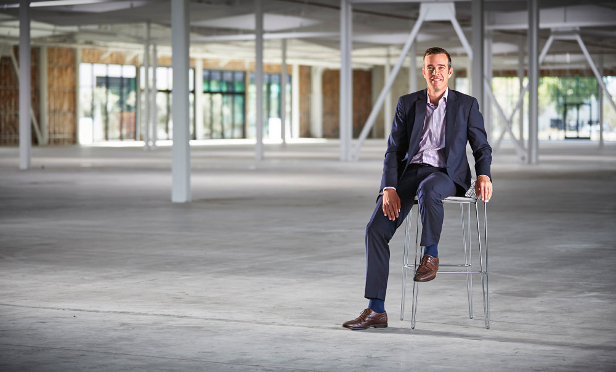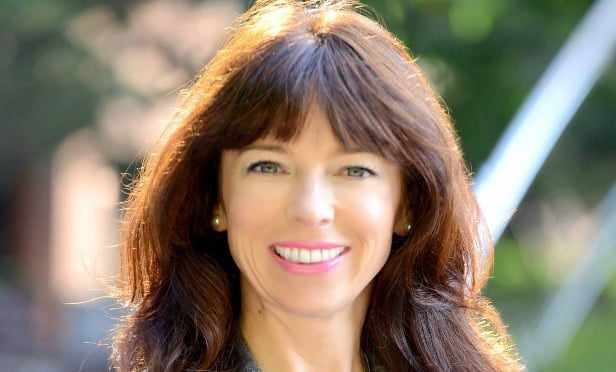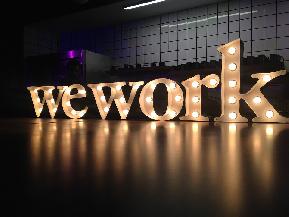 Brett Ward
Brett Ward
SAN DIEGO—Continued economic and job growth is driving occupancy and rent growth in the San Diego office market, a trend that is expected to continue in 2017, Cushman & Wakefield’s managing director, office division, Brett Ward and director of research, San Diego region, Jolanta Campion tell GlobeSt.com. According to the firm’s Q3 office-market report, the region has experienced another meaningful decline in vacancy as the market continued to shed space. Overall office vacancy in San Diego fell to a rate of 15.1% in 3Q 2016, reaching its lowest point in exactly nine years. The report also revealed that after a sluggish start to 2016, the San Diego office market has maintained steady growth over the past two quarters since vacancy declined by 40 basis points in Q3 and 10 bps in Q2. The market recorded 664,500 square feet of occupancy growth across all classes in Q3, with the North, Central and South County regions all reporting positive net absorption, led by Central County with nearly 363,500 square feet. We spoke exclusively with Ward and Campion about what is driving growth in the San Diego office market and where they see this heading next year.
GlobeSt.com: What is driving absorption and growth in the San Diego office market?
Ward and Campion: Continued economic and job growth is driving occupancy and rent growth in 2016, a trend that is expected to continue in 2017. A few key economic outlook indicators to mention include:
- Employment in the healthcare sector is forecasted to grow 4.5% in 2016 and 3.1% in 2017, positively affecting demand for office space.
- Office employment is forecasted to grow 4.0% in 2016 and 4.2% in 2017.
- All employment sectors are expected to grow over the next two years at a combined rate of 2.4% in 2016 and 2.1% in 2017.
- Unemployment rate in San Diego was 5% as of August, 100 bps below the 26-year average of 6%, and is forecasted to drop to 4.6% by end of 2016 and 4.4% by end of 2017.
- San Diego’s economy grew 3.2% in 2015 – above the 10-year average growth rate of 1.3% and is forecasted to grow 3.6% in 2016 and 3.8% in 2017, according to Moody’s Analytics economy.com forecast.
One of the major commercial real estate drivers has been the expansion of life-sciences and healthcare companies in San Diego, including significant activity from major occupants such as Eli Lilly and Illumina.
 Jolanta Campion
Jolanta Campion
GlobeSt.com: Where do you see absorption and growth heading as we finish out the year and move into 2017?
Ward and Campion: We expect to see modest and steady absorption growth going forward, resulting in a continued modest decline in countywide vacancy.
There are a number of large leases that were signed in previous quarters that will help further boost absorption in future quarters as these tenants begin officially taking occupancy. In Downtown, the co-working venture WeWork will occupy 88,000 square feet at 600 B St. In Eastgate and UTC, Ignyta will move into 95,000 square feet at Axiom, and Jones Day will occupy 60,000 square feet at One La Jolla Center. In Governor Park, UCSD will move into 74,000 square feet this fall. The University of Southern California signed a 41,000-square-foot lease in Sorrento Mesa to occupy in 2017.
Much of future absorption also stems from leases signed for new development projects currently still under construction. Again, once official occupancy takes place, our absorption figures should see a generous boost. In addition to a 296,000-square-foot build-to-suit, Illumina also leased the entire 316,000 square feet at Biomed Realty’s i3 in Eastgate, a positive sign of the impact biotechnology and healthcare companies have on San Diego’s economy. Additionally, Eli Lilly is expanding into 304,000 square feet in Campus Point. Otonomy will occupy a 62,000-square-foot build-to-suit building for its new headquarters at 4796 Executive Dr. in Eastgate. The second Spectrum Lab building in Torrey Pines is expected to be completed at 3013 Science Park Rd. and occupied by the Medicines Co. later this year. Meanwhile, Sharp will occupy a 100,000square-foot building in Rancho Bernardo in 2017.
Leasing within the 5,000- to 30,000-square-foot range should remain the primary driver of future activity, accounting for 44% of total square footage in lease obligations set to expire over the next 18 months. Leases 30,000 square feet and larger will account for 31% of activity, while leases 5,000 square feet and less will account for 25%.
GlobeSt.com: What new trends do you see emerging in this market?
Ward and Campion: We have reached the time when the Millennial (1.1 million people) generation has surpassed Baby Boomers (744,033 people) in San Diego, as well as California and the US. The Millennial generation, also known as Gen Y (ages 15 to 34), is the largest age group in San Diego County, representing 1.02 million people or 31% of the total population of 3.3 million countywide. More than a half or 53% of Gen Y are of the prime age (ages 25 to 34) influencing trends and demand for modern and amenity-rich office projects.
Consequently, companies trying to recruit and retain the very best talent are expected to provide an amenity-rich environment for their employees in submarkets close to residential areas. Millennials prefer to be close to public transportation and favor locations that support the quality of life that San Diego has to offer—enjoying the sunshine in outdoor areas, being in walkable areas near shopping and childcare, working out at the gym in or near the office and having plenty of farm-to-table and chef-focused restaurant choices among other amenities.
Co-working is gaining momentum driven by the Millennial generation’s desire to connect to community and network with other companies while working in the same environment.
GlobeSt.com: What else should our readers know about the nine-year low in vacancy?
Ward and Campion: With a decreasing vacancy, demand on the upswing and rents on the rise, market conditions are ideal for speculative development. This coupled with the fact that more than 66% of the county’s office inventory was built before 1990, bodes well for continued strong demand of new, functional facilities. Further exemplifying the stability and desirability of the San Diego office market, more than 741,400 square feet of new office product has been delivered through the first three quarters of 2016.
This trend is being driven by modern creative-office-type buildings, which remain in short supply but in high demand. As a result, we are also seeing an increasing trend of renovations of older product—the modernization of dated office and R&D buildings—to make them more appealing to tenants. This has been another factor contributing to office rent growth since the increased cost of construction compared to the previous cycle warrants higher rental rates.
The San Diego life-sciences sector is the hottest it has ever been, and we have witnessed an unprecedented increase in activity and overall expansion of the life-sciences tenant base. This explains why the majority of projects currently under construction are built-to-suit with tenant commitment in place.
Consequently, overall preleasing rate for buildings under construction has increased from 40% in the last three years (2012 to 2014) to 80% in 2016.
Tenant demand has, until recently, been predominately focused on class-A space. Class-A leasing has been positive for the last 26 of 29 quarters since the end of the recession, during which tenants absorbed a total of 5.7 million square feet, an average of 197,000 square feet per quarter. In 2015, tenants absorbed close to 1 million square feet of class-A space countywide, above the 10-year annual average of the 730,000 square feet. Class-A performance in Q3 was robust at more than 255,000 square feet compared to a quarterly average of 227,000 square feet in 2015. We continue to see steady touring and deal flow from class-A projects. Since peaking at 23% seven years ago, class-A vacancy has fallen 650 bps to 16.5%.
As class-A availability in key submarkets has become more constricted and asking rents have increased, class-B leasing has picked up notably. Class-B occupancy growth in Q3 was 309,000 square feet, more than twice the quarterly average of 120,000 square feet in 2015. One year ago, class-B vacancy stood at 16.4%, whereas it now stands at its lowest level in nearly a decade at 14.4%. Tenants had absorbed 483,000 square feet of class-B space in 2015, while 2016 is set to be the fifth consecutive year of positive occupancy for class B, with nearly 495,000 square feet already absorbed year-to-date. Class B struggled for six years—long before and after the last recession—returning 2.2 million square feet combined between 2006 and 2011. Since 2012, tenants have backfilled close to 1.9 million square feet of class-B space, recovering nearly 90% of space returned to the market during the last recession.
Interestingly, rents are growing faster for class B than A because there was a significant delta/pricing gap between class A and B during the post-recession years.

















 Copyright © 2024 ALM Global, LLC. All Rights Reserved.
Copyright © 2024 ALM Global, LLC. All Rights Reserved.